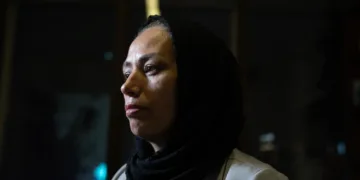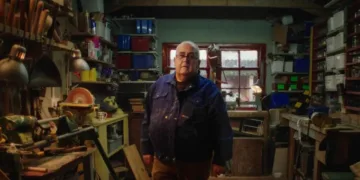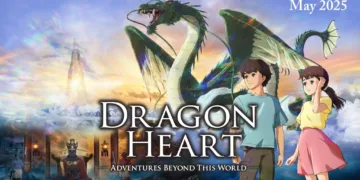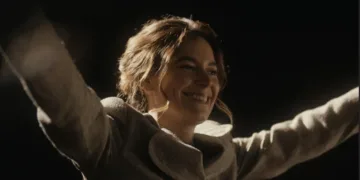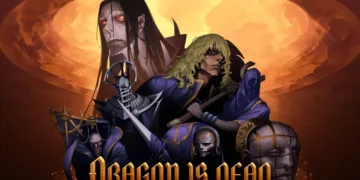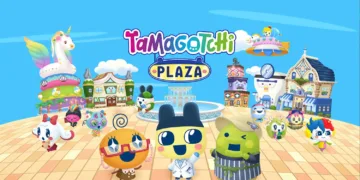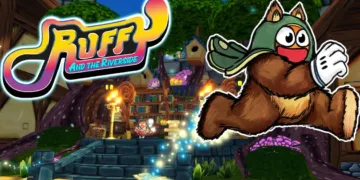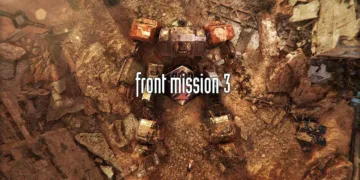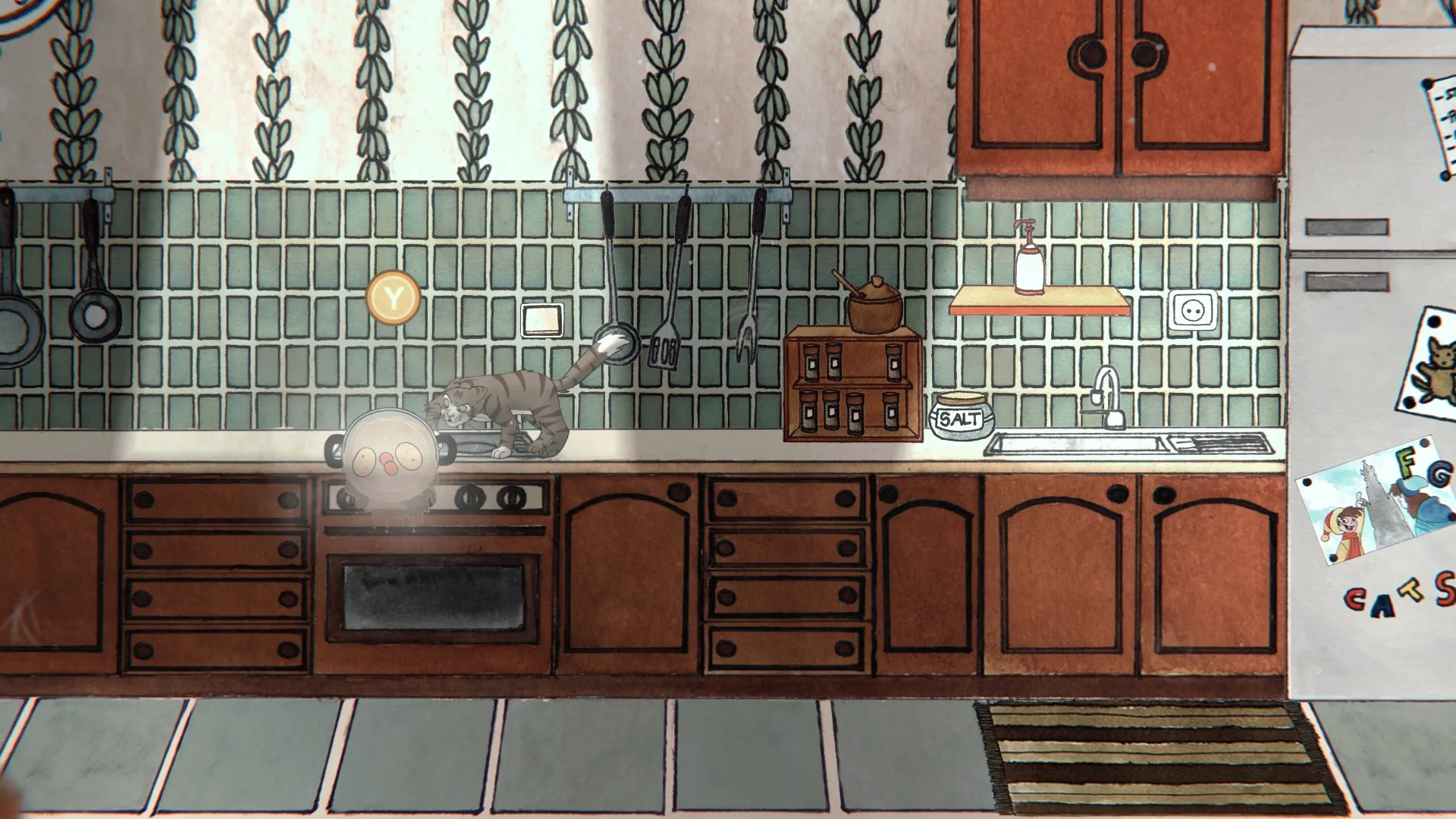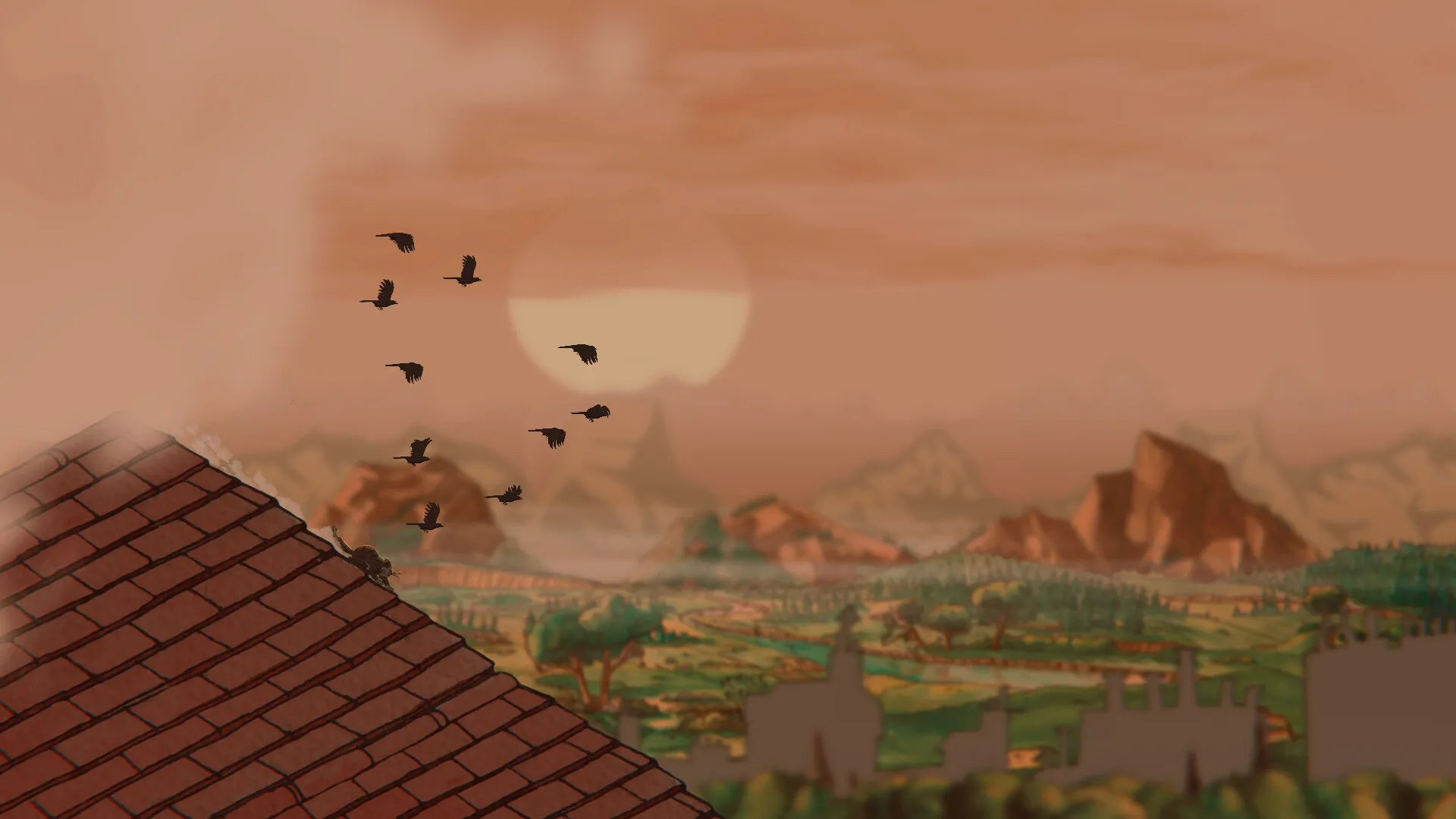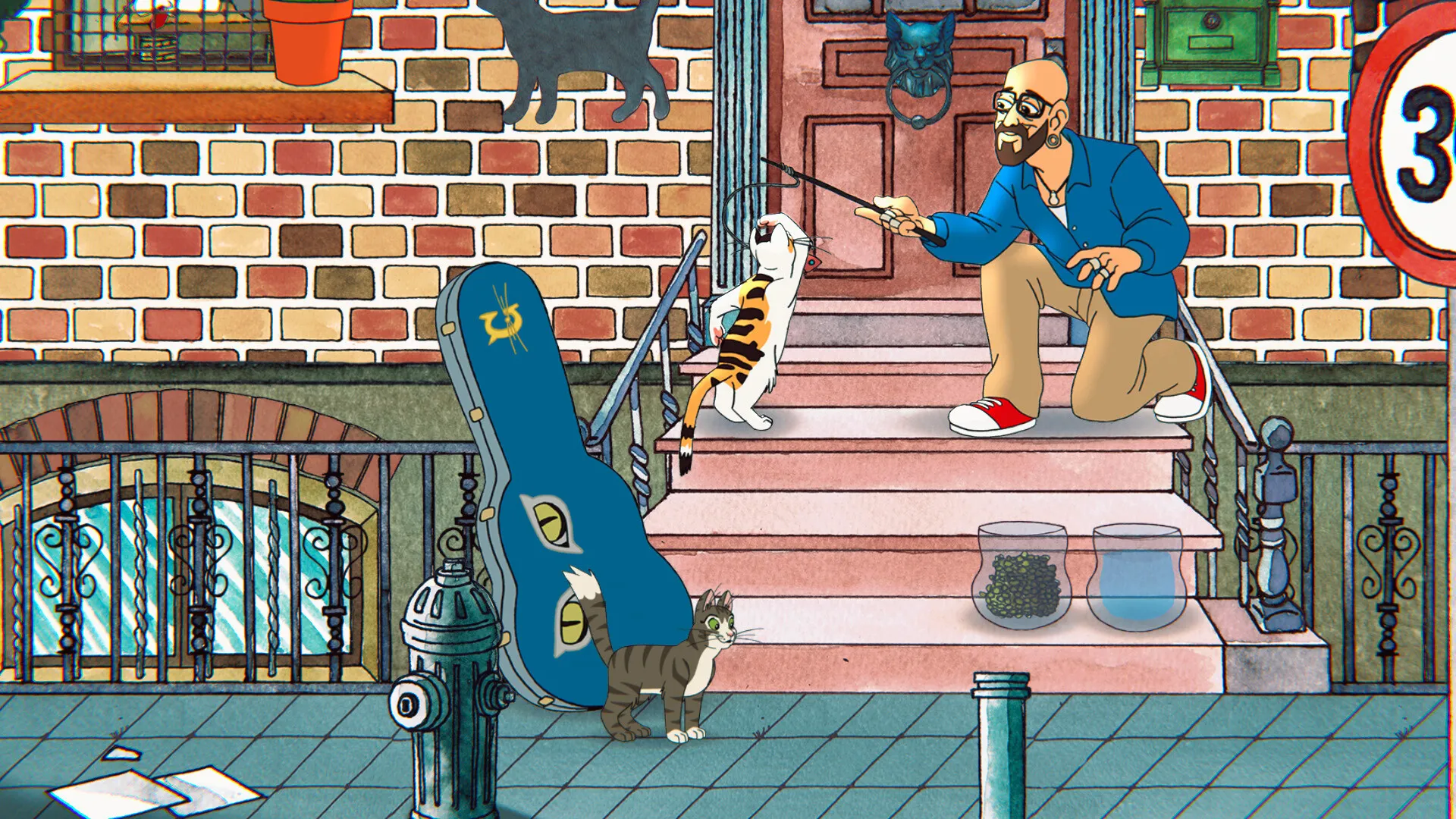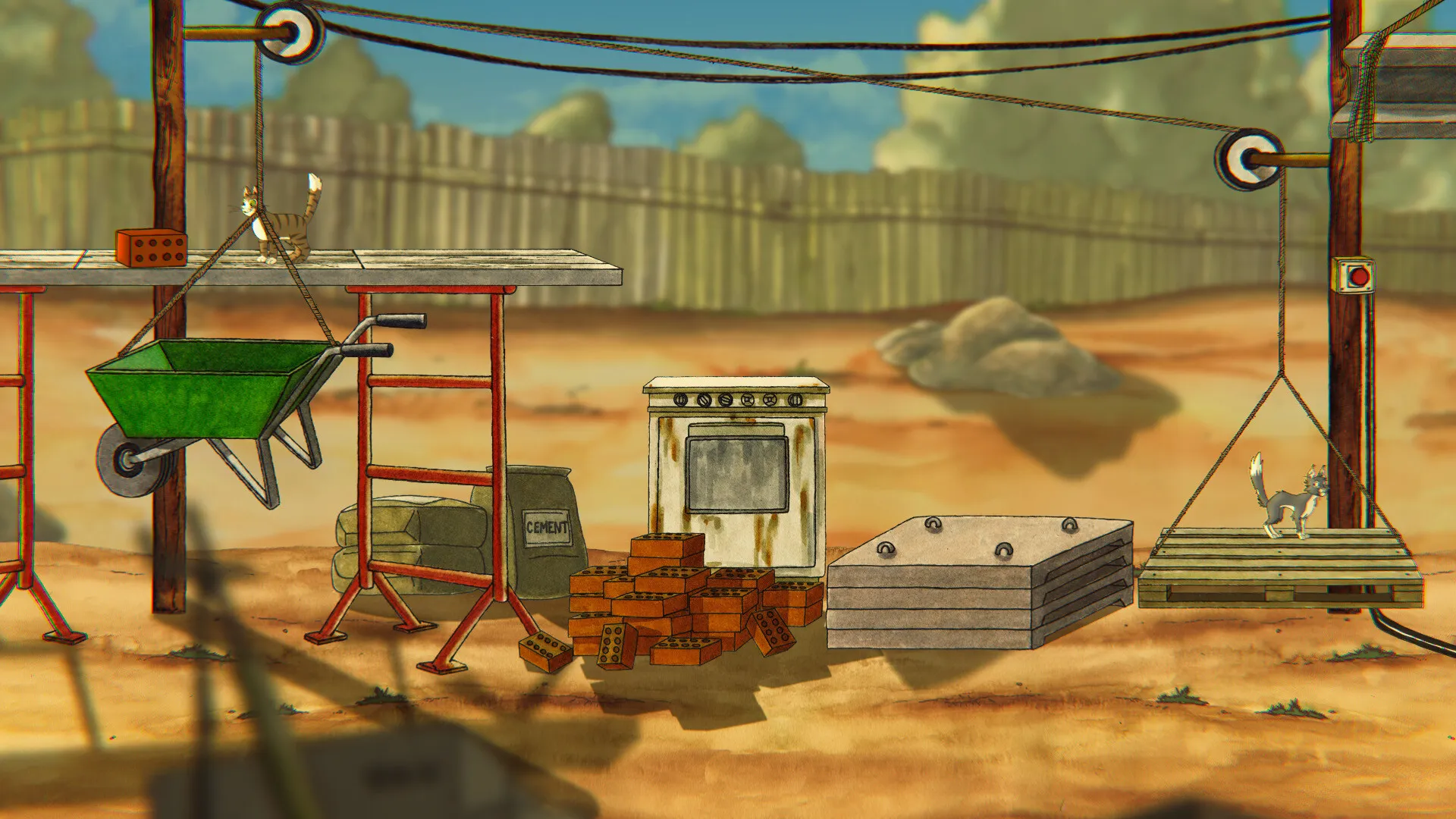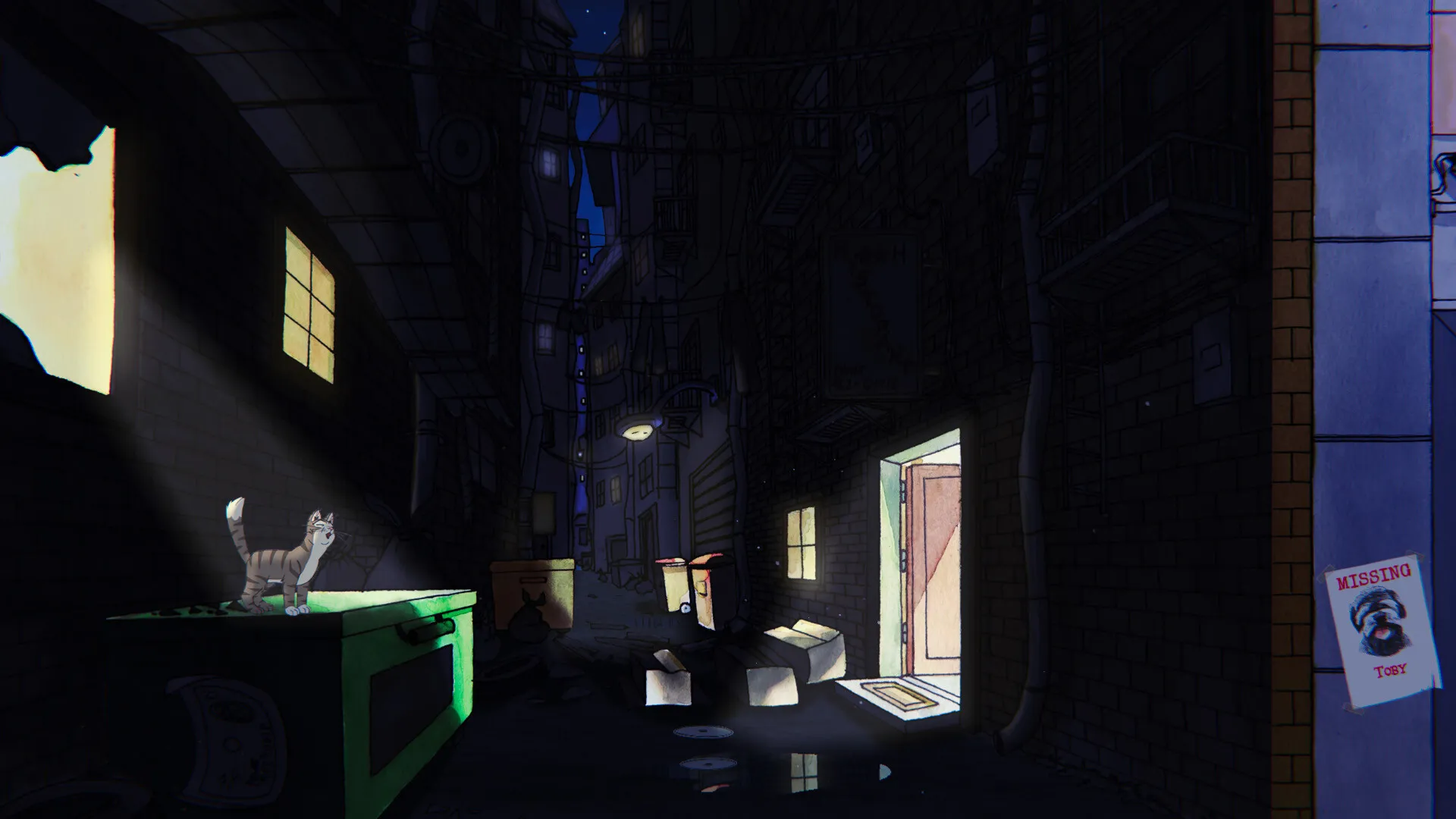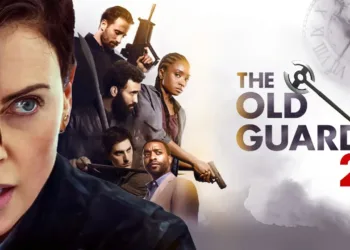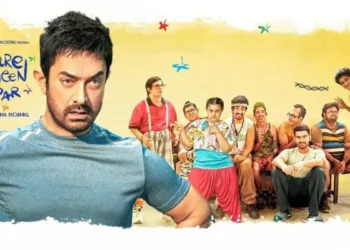Players are invited into a whimsical world through the eyes of Moka, a curious house cat, in “Stars In The Trash,” a game created by the passionate team at Valhalla Cats and released on December 9.
This independent platformer masterfully combines beautiful hand-drawn graphics with a moving narrative that will appeal to both casual and serious players. The game’s main idea is that Moka plans an exciting escape from her home, which takes her to a busy city full of interesting characters and challenges.
Players accompany Moka on her journey and encounter an expertly weaved story that highlights not only her mischievous actions but also themes of empathy and connection to the animal world.
The developers’ previous work on independent games is evident as they create a game that feels both familiar and new, reminiscent of old animated movies, while still being able to stand on its narrative legs. These two things work together to make a gameplay experience that is technically interesting and emotionally powerful.
The Whimsical Journey of Moka: Characters and Themes in “Stars In The Trash”
At the center of “Stars in the Trash” is Moka, a wild house cat who leaves the safety of her home to explore the busy streets out of curiosity. Her simple yet relatable motives are a desire for adventure and the thrill of exploration. This shift from the cozy warmth of her living room to the busy, exciting world outside serves as a potent narrative tool.
As Moka faces challenges and connects with other creatures along the way, players can see how she develops. To advance the story and engage players in a meaningful way, the game cleverly makes use of Moka’s playful antics—knocking over flower pots and interacting with her environment. Players are encouraged to feel invested in Moka’s journey by this combination of exploration and character growth.
Moka’s adventure is enriched by a cast of endearing supporting characters that populate her world. From fellow strays to kind-hearted humans, each character adds depth to the narrative. Notably, the bad guy, a dogcatcher, represents a darker side of city life, adding tension to Moka’s adventures that initially seem harmless.
His presence catalyzes Moka’s development, pushing her to face challenges that test her strength and empathy. The exchanges with these characters are more than just encounters; they are crucial to Moka’s growth and development, reinforcing the game’s main theme, which is connection, both with other animals and with the people who care for them.
Moka’s journey becomes a moving exploration of compassion thanks to the underlying themes of empathy and animal care throughout the game. As players guide Moka through different challenges, like saving a dog from a rat or finding a child’s lost toy, they are asked to think about how they treat animals and how important it is to be kind.
The game’s subtle storytelling techniques, which highlight the struggles and joys of both Moka and those she meets, enhance the emotional depth of the narrative. Players are encouraged to engage with Moka’s world on a deeper level thanks to the thoughtful integration of themes into the gameplay mechanics. Despite its whimsical presentation, the result is a game that has deep meanings about care, connection, and the experiences that all creatures share.
Navigating Moka’s World: Analyzing Gameplay Mechanics in “Stars In The Trash”
“Stars In The Trash” is mostly about its platforming features, which are easy to understand and fun to play. Players control Moka through several environments that call for precise jumping and climbing, reminiscent of old-school platform games like “Super Mario” and “Celeste.” The game uses environmental storytelling to let players explore Moka’s urban playground while solving tasks that fit her cat personality.
For example, the player’s connection to Moka as a character is strengthened by climbing shelves or jumping between rooftops, which both advance the narrative. Players are invited to engage with their surroundings in a rewarding and immersive way thanks to the seamless merging of exploration and puzzle-solving elements that create a dynamic experience.
“Stars In The Trash” is mostly a platformer, but it also has an easy-to-use combat system that complements the game’s gameplay. The odd vacuum cleaner boss, a memorable meeting that tests both timing and strategy, is one of the many enemies players face.
There aren’t many complicated controls for fighting; you just swipe, jump, and dodge to get through fights. This is a strength because it lets players focus on the narrative and exploration without getting bogged down by complicated mechanics. Including a dogcatcher antagonist raises the game’s stakes, reinforcing Moka’s journey and telling players that her world is full of whimsical and dangerous elements.
The game’s difficulty level strikes a satisfying balance between making it approachable for casual gamers and providing challenges that engage more experienced players. Players’ comments often talk about how forgiving the game is; if Moka falls or is caught, the consequences aren’t too bad, and the game can be started over quickly, which keeps players from getting too frustrated.
This design choice promotes exploration and experimentation, allowing players to learn from their mistakes without experiencing negative consequences. However, some players might find it hard to use some of the tools for jumping, especially when going up and down stairs. Despite these small problems, the task is still fun overall, allowing players to savor the whimsical journey without getting bogged down by too many complicated systems. This thoughtful approach to difficulty enhances Moka’s adventure’s emotional resonance, making each win feel important in the context of her story.
The Artistry of “Stars In The Trash”: A Visual Journey
Players are captivated by “Stars In The Trash”‘s beautiful hand-drawn animation and watercolor-inspired visuals, which evoke a sense of nostalgia reminiscent of old animated movies. The art style is more than just a background; it’s an important part of the whimsical but moving narrative of the game.
Drawing comparisons to famous Disney movies from the “golden age,” each frame shows a deep love for animation. This choice of style helps to enhance the emotional weight of Moka’s journey by combining the charm of old stories with a more contemporary narrative style. Every scene is a visual treat that complements the themes of exploration and adventure, and the bright colors and fluid animations draw players into a world that feels alive.
“Stars In The Trash” really shines when it comes to attention to detail. Every animation, from Moka’s playful jumps to the quiet responses of background characters, adds depth to the story. For example, Moka’s interactions with her players—knocking things over, scratching furniture, or curiously peering around corners—mirror real cat behavior, creating a relatable environment for players. These little details make the game fun, making Moka feel like a real person rather than just a sprite on the screen.
Environmental details further enhance the narrative, with each backdrop telling its own story. The hand-painted textures evoke a sense of coziness and comfort, reminiscent of watching animated movies on Sunday afternoons as a kid.
This well-thought-out design makes players want to stay in each area for a while, discovering the world as they go. Making sure that every jump and climb feels important in the context of Moka’s adventure, the graphics work well with the gameplay. The artistic choices made in the game make the whole experience feel connected and powerful, making every moment spent in this beautifully built world unforgettable and important.
The Soundscape of “Stars In The Trash”: Crafting an Immersive Experience
Players are fully immersed in Moka’s world thanks to the audio components of “Stars In The Trash,” which mix reality with a sense of whimsy. The sounds of animals in the game, from Moka’s soft purring to the barking of other street animals, feel real and relatable.
These small details improve the environment, making every space feel alive and full of things to do. Ambient sounds, such as the rustling of leaves or the distant chatter of city life, enhance the experience by creating a narrative that draws players deeper into the narrative. Players can sense the world around Moka as she faces her challenges thanks to these auditory cues, which are more than just background noise.
Along with the sound design, a carefully composed vocal score fits the game’s themes and emotional beats. The music in the movie is full of happy, upbeat tunes that show Moka’s daring personality. When she feels stressed or sad, the music changes smoothly to more serious sounds. The narrative is emphasized by this dynamic range of music, which also heightens emotions and helps players navigate the highs and lows of the story.
Like in classic RPGs, the strategic changes in the score improve the gameplay experience by indicating changes in the narrative and making important moments more exciting. The result is a seamless audio experience that supports and adds to the narrative, making every moment in “Stars In The Trash” feel important and unforgettable.
Duration and Replayability in “Stars In The Trash”: A Delicate Balance
Depending on player involvement and side activities, “Stars In The Trash” offers a brief gameplay experience, usually lasting between two and three hours. Players are encouraged to savor each environment and the narrative elements accompanying it, thanks to the level structure’s steady pace.
This pace allows for meaningful interactions without going on too long, finding a balance that appeals to casual gamers looking for a quick adventure and serious players looking for depth. However, the short length can also make players want more, especially since Moka’s journey takes place in a rich world with much emotional weight.
The lack of mid-level save options somewhat hinders the game’s replayability despite its narrative being compelling enough to justify multiple plays, especially for players eager to explore different choices and outcomes. If a player leaves a level, they have to start it over, which can be annoying and take away from the experience.
This limitation can make the experience less enjoyable than independent games with more generous save systems. Despite this, players may still be drawn back by the captivating story and vibrant world as they work to learn every last detail and connect with the characters in novel ways. The frustrating save system ultimately marries “Stars In The Trash’s” replay value, reminding players of the fine line between narrative depth and accessibility, even though it shines during the first playthrough.
Overall Experience with “Stars In The Trash”: A Feline Adventure Worth Taking
“Stars In The Trash” is great because of its cute art style, interesting narrative, and well-thought-out game mechanics that make players feel things. Moka’s journey promotes a genuine connection to themes of adventure and empathy, and the hand-drawn graphics and whimsical sound design make for an immersive experience.
Some players, especially those looking for more exploration, may be disappointed by the game’s short duration and lack of mid-level save choices. Despite these drawbacks, the game’s touching storytelling and user-friendly mechanics make it a great choice for casual gamers and indie fans, leaving an impact long after the credits roll.
The Review
Stars In The Trash
"Stars In The Trash" is a fun independent adventure game that expertly combines endearing graphics, an interesting narrative, and simple gameplay. The emotional depth and whimsical exploration make for a memorable experience despite the game's short length and limited save choices. Players can relate to Moka's journey through a vibrant world of empathy and connection, which is fun and thought-provoking.
PROS
- Charming hand-drawn art style and watercolor visuals.
- Engaging narrative with emotional depth.
- Accessible gameplay mechanics suitable for all skill levels.
- Immersive sound design that enhances the experience.
- Meaningful character interactions and player choices.
CONS
- Short playtime, averaging 2-3 hours.
- Lack of mid-level save options can be frustrating.
- Certain jumping mechanics may feel finicky.






















